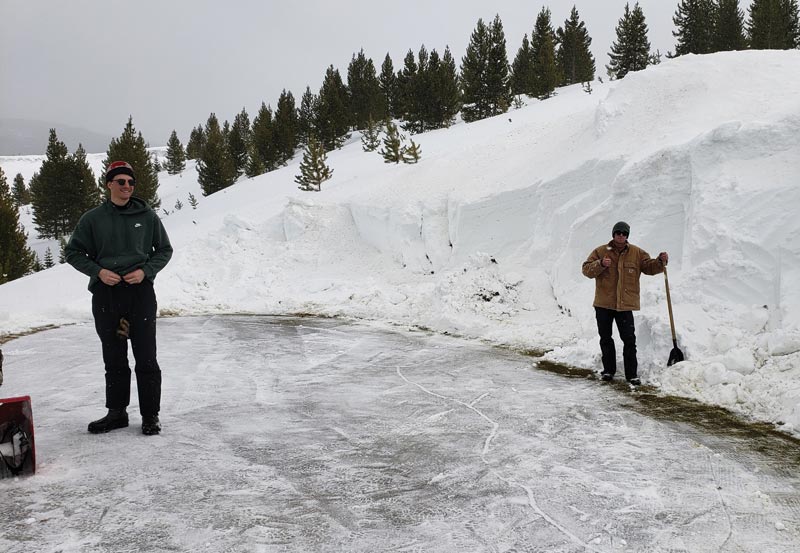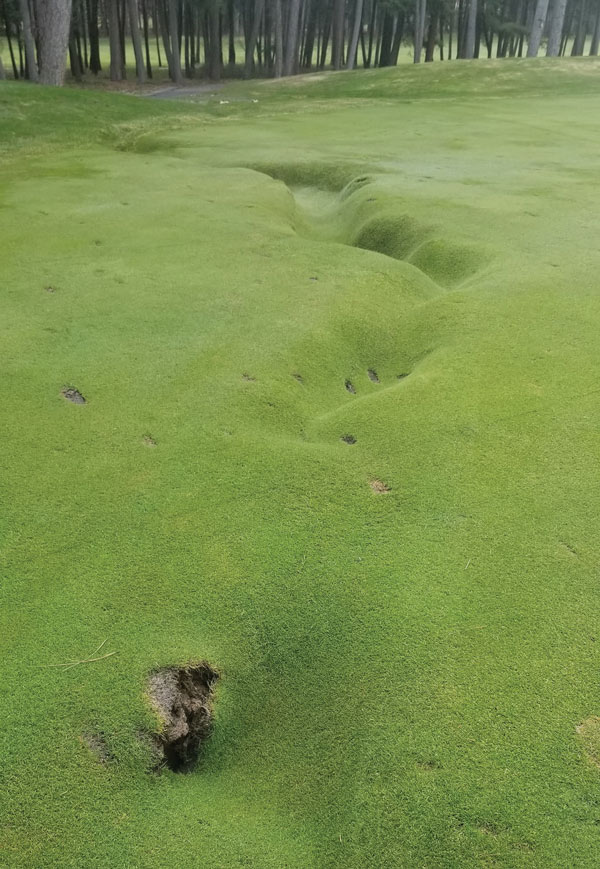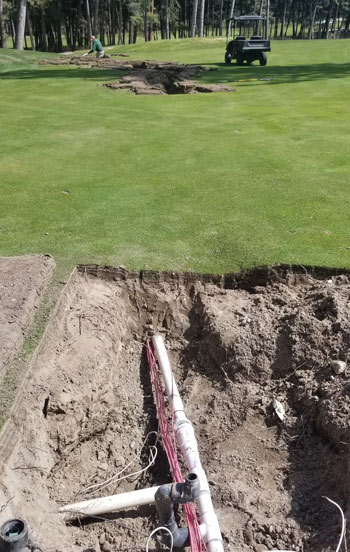GCM’s Photo Quiz is presented in partnership with STEC Equipment.

Problem A: Pile of snow behind green

Location: Big Sky, Mont.
Turfgrass area: Tee
Turfgrass variety: Penncross bentgrass
Problem B: Uneven fairway surface

Location: Kelowna, British Columbia
Turfgrass area: Landing area on par-4 fairway
Turfgrass variety: Dominant X-Treme bentgrass and Poa annua
Scroll down for answers.
Problem A: Pile of snow behind green
When I first saw this photo, I asked the golf course superintendent for permission to use it, and he was perplexed as to why I’d be interested. He did not think this photo showed a problem or anything unusual, because snow — and lots of it — is normal in this part of the world (southwestern Montana), as much as 72 inches (6 feet) a year.
The golf course accumulations really depend on the wind. When staff members clear paths, they can clear anywhere from 3 to 20 feet of snow, depending on where they are on the course. Around mid-March, they begin the snow removal process, clearing nearly 8 miles of paths, which takes about two weeks. To clear the greens and tees, they use a tracked skid steer with a snowblower to remove the top 2 to 5 feet, then walk-behind blowers to clear the bottom 4 to 6 inches. On average, they can clear about three greens per day with a crew of six.
Avoiding damage to the greens and tees from the blowers is the biggest concern. After the snow has been removed, staffers apply fungicides and let the snow start to accumulate again, and they don’t clear the areas until the snow melts off on its own, to avoid causing any more mechanical damage.
Photo submitted by Garrett Turner, the GCSAA Class A superintendent at The Reserve at Moonlight Basin in Big Sky, Mont., and a 12-year GCSAA member.
Problem B: Uneven fairway surface

This photo illustrates something that occurs frequently in northern climates, but because of the native sand on this golf course, the damage here was substantial.
The irrigation system was repressurized for spring the day before this photo was taken, and the damage occurred during the first full cycle intended to get all the air out of the lines. Even though the irrigation system is more than 25 years old, a relatively new part — a telescopic repair coupler that was only a few years old — blew and created this problem. The superintendent estimated that the break occurred at approximately 9:30 p.m., and the pump station finally shut itself down at 2 a.m., as the pumps couldn’t keep up.
The repair was performed by the crew, who cut the sod into chunks to get it out of the trench, which was 2 feet wide and 2 feet deep. After the coupler had been repaired, the trench was backfilled with native sand, and the turf was resodded from the facility’s nursery. The irrigation repair only took about 90 minutes, but the entire repair took more than 24 work-hours. Fortunately, at the time of the damage, the course was closed because of the COVID-19 pandemic. The maintenance team also no longer uses telescopic repair couplers anywhere on the course.
Photo submitted by Gary Stadnek, superintendent at Okanagan Golf Club in Kelowna, British Columbia, and a 14-year GCSAA member.
Editor’s note: Have a photo for Photo Quiz? Email it to author John Mascaro.
John Mascaro is the president of Turf-Tec International.